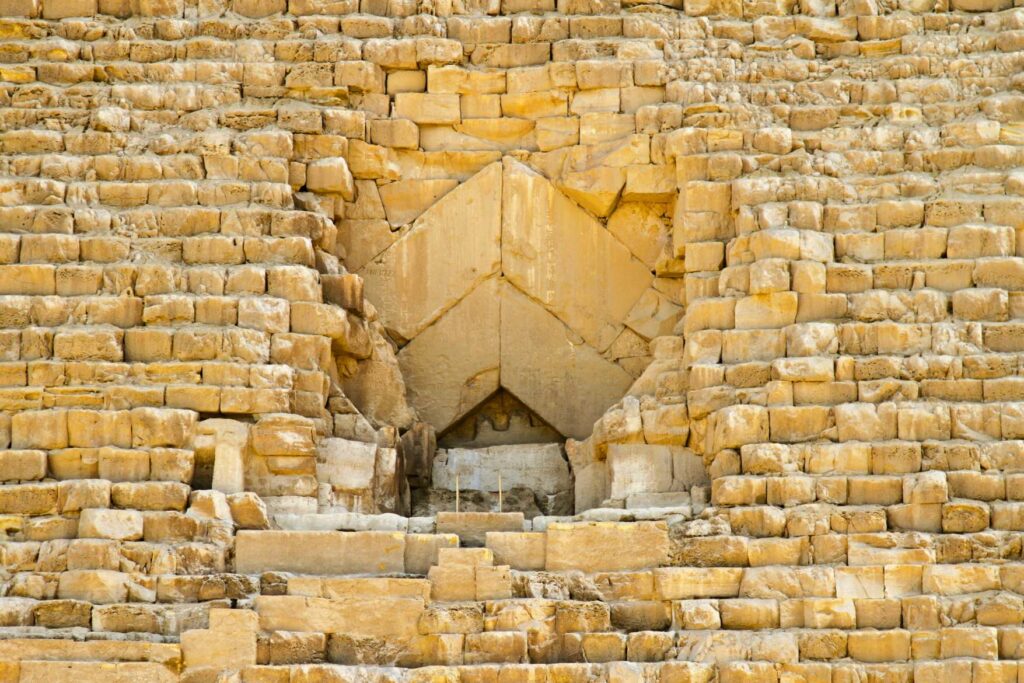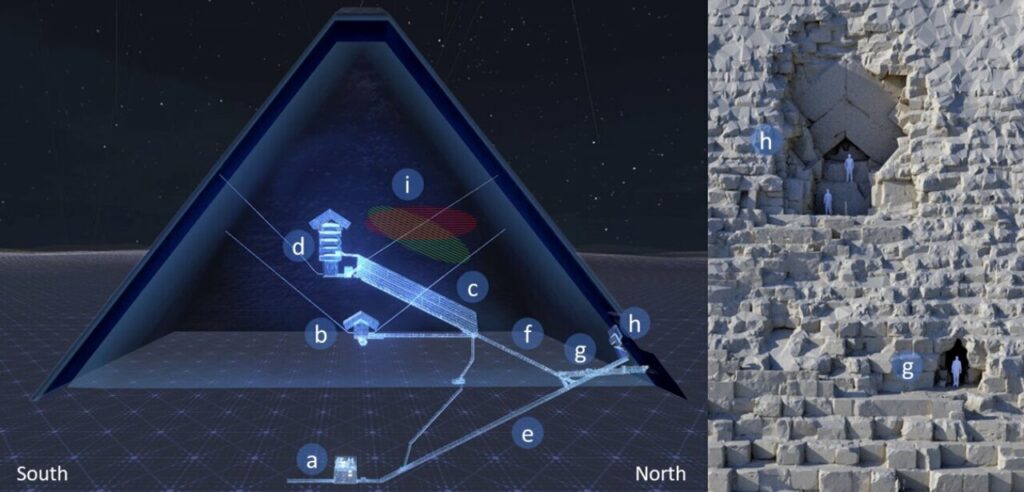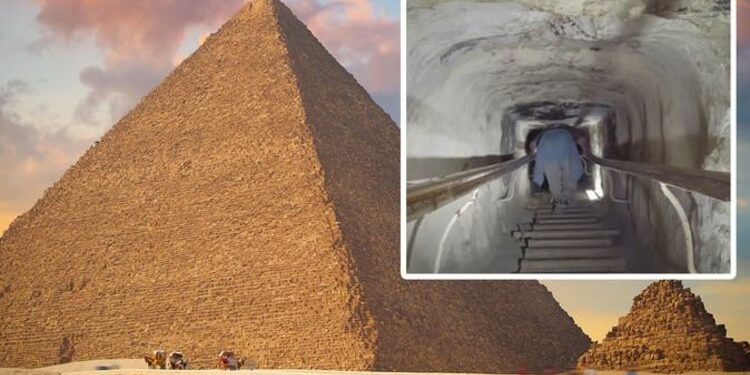Built over 4,500 years ago, the Great Pyramid of Giza, Egypt, is the only remaining structure of the Wonders of the Ancient World as described by the ancient Greek historian Herodotus. Despite being one of the most extensively explored tombs in human history, it continues to reveal new secrets and mysteries.
In March 2023, an international team of researchers made headlines when they discovered a previously unknown chamber in the Cheops pyramid. This discovery is particularly exciting because it could reveal new insights into the building techniques and religious practices of the ancient Egyptians.

As early as 2016 measurements had given reason to assume the existence of a hidden hollow space in the vicinity of the chevron blocks over the entrance. In 2023, scientists from the Technical University of Munich (TUM) used ultrasound and endoscopy to make an important contribution to confirming this assumption. The status of the Egyptian pyramid as one of the best-investigated structures in the world makes this find particularly important.

The corridor – on the northern side of the Pyramid of Khufu – was discovered by the international research team “ScanPyramids” using modern scanning technology. It measures 9 meters (nearly 30 feet) in length and is 2 meters (over 6 feet) wide, perched above the main entrance of the pyramid.
Assumption confirmed
In 2016 several measurements by Japanese and French researchers provided evidence for the existence of the chamber. The TUM research group has been on board since 2019, helping to explore the pyramid for hidden structures. They use various non-destructive testing methods which make it possible to look into the stone blocks and the areas behind them.
“The pyramids are a World Heritage Site. This means we have to be especially careful when conducting our investigations so that we don’t damage anything. We’re working on the Cheops pyramid with radar and ultrasound measuring devices that can be used on a non-destructive basis, and in part even contact-free,” says Prof. Christian Grosse, TUM Chair of Non-Destructive Testing.
Chamber is larger than expected
The initial measuring devices provided a good first impression of the situation. The scientists then used endoscopy to confirm the assumption. The team found an opening between the stones of the chevron, a solid stone construction, through which they were able to run a tube into the chamber. They then used this tube as a guide for an endoscopic camera lens. The camera confirmed the existence of the hollow space.

“Discovering a hollow space in a pyramid is already something special. But the fact that this chamber is large enough to accommodate several people, well, that makes the discovery even more important,” says Prof. Grosse.
The chamber is larger than researchers had assumed in the past. The original measured data pointed to the existence of a corridor at least five meters long; however, according to initial estimates, the length of the chamber considerably exceeds this length. There are no footprints or other evidence of human activity to be seen within the chamber. Thus the research group assumes that this room has not been seen by anyone for approximately the last 4,500 years.
Archaeologists have not yet ascertained the function of the chamber, which is not accessible from the outside. In 2017, scientists announced the discovery of another sealed-off corridor, a 30-meter chamber – or about 98 feet – also inside the Pyramid of Khufu.

According to the researchers, there are two large limestones at the end of the chamber, leaving a question unanswered: what lies behind these stones and below the chamber? They also said the corridor may have been designed to redistribute weight above the main entrance or around another as yet undiscovered chamber.
The significance of the discovery is not only about finding the new corridor, but it also has important implications that can help in solving long-standing mysteries surrounding the Great Pyramid. Experts think these implications can provide answers to questions about the construction of the pyramid over 4,500 years ago, and how it was accomplished using the technology and resources available at that time.
The study originally published on NDT & E International. March 02, 2023.






















